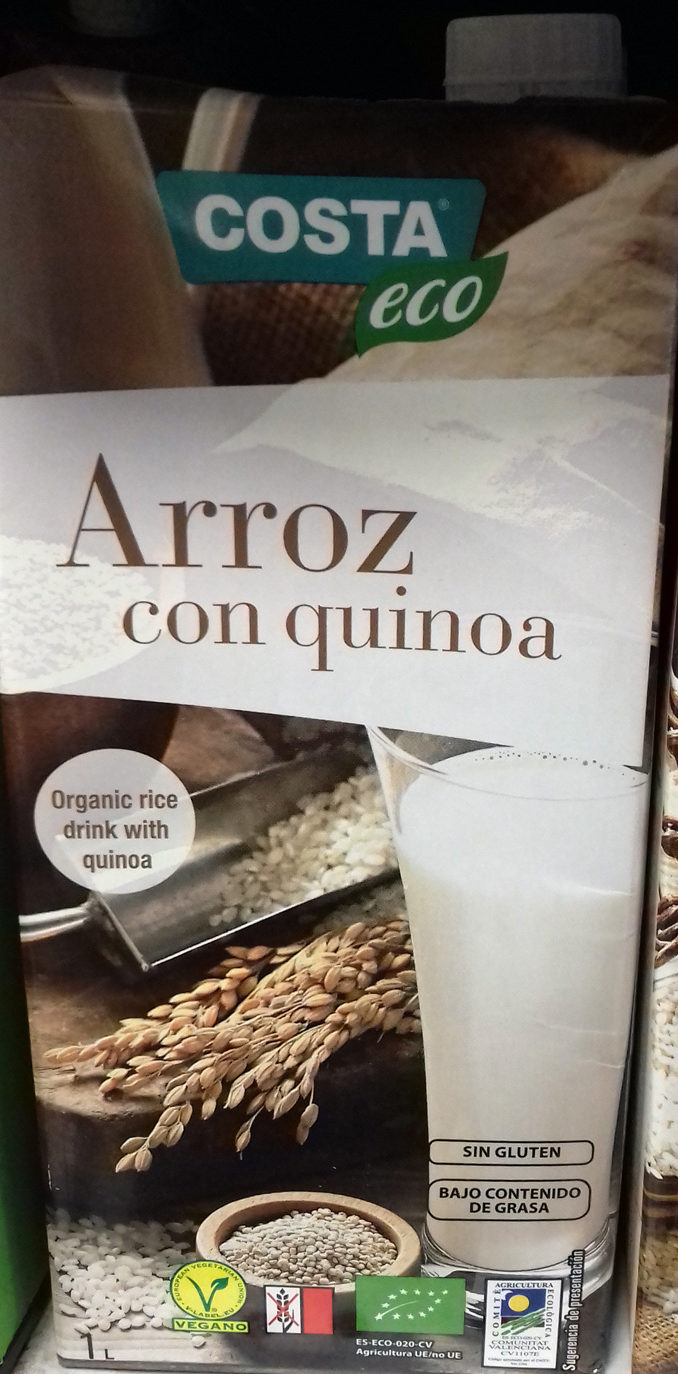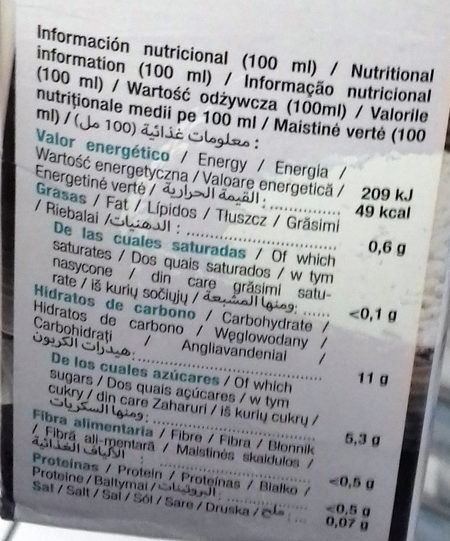Arroz con quinoa - Costa - 1 l
Aquesta pàgina del producte no està completa. Podeu ajudar a completar-la editant-la i afegint-hi més dades a partir de les fotos ja disponibles, o fent-ne més amb l'aplicació de androide o iPhone / iPad. Gràcies!
×
Codi de barres: 8410509003624 (EAN / EAN-13)
Nom comú: Bebida ecológica de arroz con quinoa
Quantitat: 1 l
Empaquetament: es:Tetrabrik
Marques: Costa
Categories: Aliments i begudes amb base vegetal, Begudes, Aliments amb base vegetal, Cereals i patates, en:Dairy substitutes, Cereals i derivats, Substitutius de la llet, Begudes amb base vegetal, Begudes vegetals, en:Cereal-based drinks, Beguda d'arròs
Etiquetes, certificacions, premis:
Baix o sense greix, Baix en greixos, Lliure de gluten, Orgànic, Vegetarià, Orgànic UE, Agricultura No-UE, Vegà, ES-ECO-020-CV, Agricultura UE, Procedent d'agricultura UE/no UE, Unió Vegetariana Europea, Unió Vegana Vegetariana Europea, FSC, Mix FSC, Punt verd




Enllaç a la pàgina del producte en el lloc oficial del productor: http://www.costaeco.es/
Botigues: Carrefour
Països on es va vendre: Espanya
Matching with your preferences
Entorn
Petjada de carboni
Empaquetament
Transport
Etiquetes
Report a problem
Fonts de dades
Producte afegit per neptuno
Última modificació de la pàgina del producte per worldtest.
La pàgina del producte, també editada per kiliweb, openfoodfacts-contributors, thaialagata, yuka.ZnB3UVByc05pZklKcXNVMDBpL1kyTkpwN2MrSEIwWHVHL010SVE9PQ.











